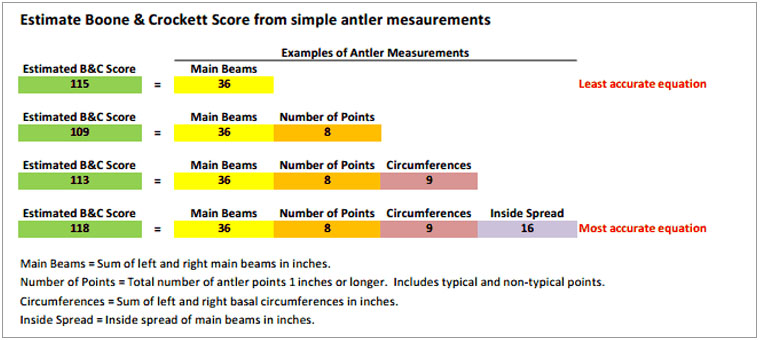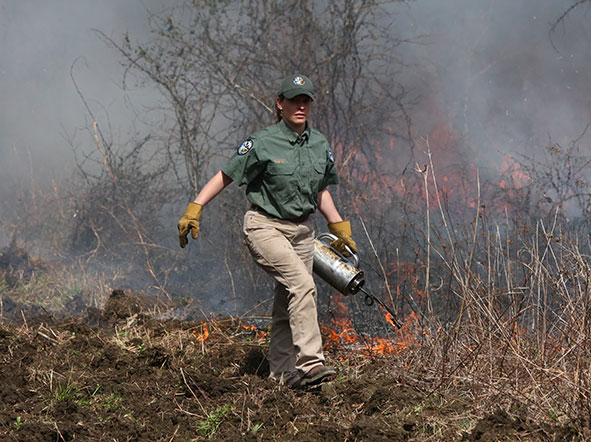Estimating Boone & Crockett Score
The Boone & Crockett Scoring system (http://www.boone-crockett.org/) has become the "gold standard" for measuring white-tailed deer antlers. Although many people have tried, no scoring system has surpassed the Boone & Crockett (B&C) system for recognition and popularity. Even if you're not familiar with how the scoring system works, you are likely familiar with the B&C scores that represent trophy animals. For example, a B&C score of 170 inches for a typical white-tailed deer would make the all-time record book, and a score of 160 inches would make the buck eligible for the 3-year award. Similarly, for non-typical white-tailed deer, a buck scoring 195 inches would make the all-time record book, and a score of 185 inches would receive 3-year award recognition. If you or a friend has been lucky enough to harvest or find a buck that comes close to these minimum scores, you should locate an official Boone & Crockett measurer in your area. The Boone and Crockett website provides a list of official measurers located in each state.
But what if you want a simple estimate of B&C score without taking all the necessary measurements? Often times this scenario occurs among hunters or deer herd managers that wish to have an approximate score, or in many deer management programs, a manager may wish to monitor the average B&C score of harvested bucks to determine the condition of the herd and if management activities are effective. Is the habitat management program working? Did the average size of antlers increase after reducing the deer herd to below carrying capacity?
The MSU Deer Lab developed a few equations that may help. Please keep in mind, this only an estimate of B&C score — to determine the true score, the antlers must be measured by someone familiar with the B&C scoring system. The MSU Deer Lab developed 4 equations using the sum of both main beams (inches), number of antler points, sum of both basal circumferences, and the inside spread. There's an equation that uses only the sum of both main beams, but this is the least accurate equation. The more measurement you can enter, the better. So, the best equation uses the sum of both main beams, number of points, sum of basal circumferences, and the inside spread.

The best results occur when the user enters the average antler measurements for a group of bucks. For example, if a manager was examining the harvest data from the previous hunting season they could take the average of all the main beams, circumferences, spread, and number of points from all the bucks harvested to determine the average B&C score. Or, a manager may want to estimate average B&C score by age class — for all the 3.5 year, 4.5-year, and 5.5-year bucks. In this context, the equations are most accurate.
Enter Antler Measurements
If you have these antler measurements you can enter the values in the box below, click on the calculate button, and an estimate of B&C score will be produced. Remember — this is only an estimate.



